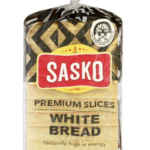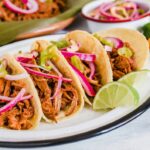Food labeling is crucial for consumer safety, as it provides essential information about ingredients, preparation methods, and potential allergens. However, when foods are mislabeled, it can lead to dangerous consequences, as some seemingly harmless foods can become toxic under certain conditions. Here are 10 foods that can be poisonous if incorrectly labeled or improperly prepared.
1. Fugu (Pufferfish)
Fugu is a delicacy in Japan, but if prepared incorrectly, it can be deadly due to its high levels of tetrodotoxin, a potent neurotoxin. Only licensed chefs are allowed to prepare this dish. Improper labeling or preparation can lead to fatal poisoning.
2. Wild Mushrooms
Many edible mushrooms resemble toxic species. For example, the death cap mushroom (Amanita phalloides) looks similar to certain edible varieties, but it contains toxins that can cause liver failure. Mislabeled or misidentified wild mushrooms can lead to serious poisoning.
3. Cassava (Manihot esculenta)
Cassava is a staple in many tropical regions, but it contains cyanogenic glycosides in its raw form, which can release cyanide when consumed. Incorrect labeling that fails to mention whether cassava has been properly processed can result in cyanide poisoning.
4. Shellfish
Shellfish, like oysters and mussels, can accumulate toxins from algae, such as paralytic shellfish toxins (PSTs). If shellfish are harvested from polluted waters or not properly monitored for toxins, they can cause serious food poisoning. Incorrect labeling of the origin or processing can increase the risk of exposure.
5. Elderberries
While elderberries are often used in syrups and jams, their leaves, stems, and unripe berries contain cyanogenic glycosides, which can convert to cyanide in the body. If elderberry products are mislabeled or contain unripe parts of the plant, they can cause nausea, vomiting, and cyanide poisoning.
6. Ackee Fruit
Ackee is a popular fruit in Jamaica, but if eaten before it is fully ripe, it can cause Jamaican Vomiting Sickness due to the presence of hypoglycin A, a toxin that leads to dangerously low blood sugar. Incorrect labeling of the ripeness or preparation method of ackee can result in severe poisoning.
7. Nutmeg
Nutmeg is commonly used in small quantities to spice dishes, but in larger amounts, it can be toxic due to myristicin, a compound that can cause hallucinations, nausea, and seizures. Improper labeling or excessive use in products can result in nutmeg poisoning.
8. Rhubarb
The stalks of rhubarb are safe to eat, but its leaves contain oxalic acid and other toxins that can cause breathing difficulties, seizures, and kidney damage. If rhubarb products are mislabeled or contain leaves, they can pose a serious health risk.
9. Honey
Raw honey, especially when produced from certain plants like rhododendrons, can contain grayanotoxins, which cause honey intoxication (also called “mad honey poisoning”). Improper labeling of raw honey or its floral source can lead to dizziness, nausea, and irregular heart rhythms.
10. Red Kidney Beans
Red kidney beans contain phytohemagglutinin, a toxin that can cause severe nausea, vomiting, and diarrhea if the beans are not properly cooked. Mislabeled or undercooked beans can result in poisoning, especially in canned or pre-packaged foods.
Accurate food labeling is essential to ensure safety, as certain foods can become poisonous if mislabeled or improperly prepared. Consumers must be cautious and ensure they are buying from reputable sources, while producers must strictly follow labeling regulations to avoid dangerous mistakes. Recognizing these potentially hazardous foods can help prevent foodborne illnesses and ensure a safe dining experience.








